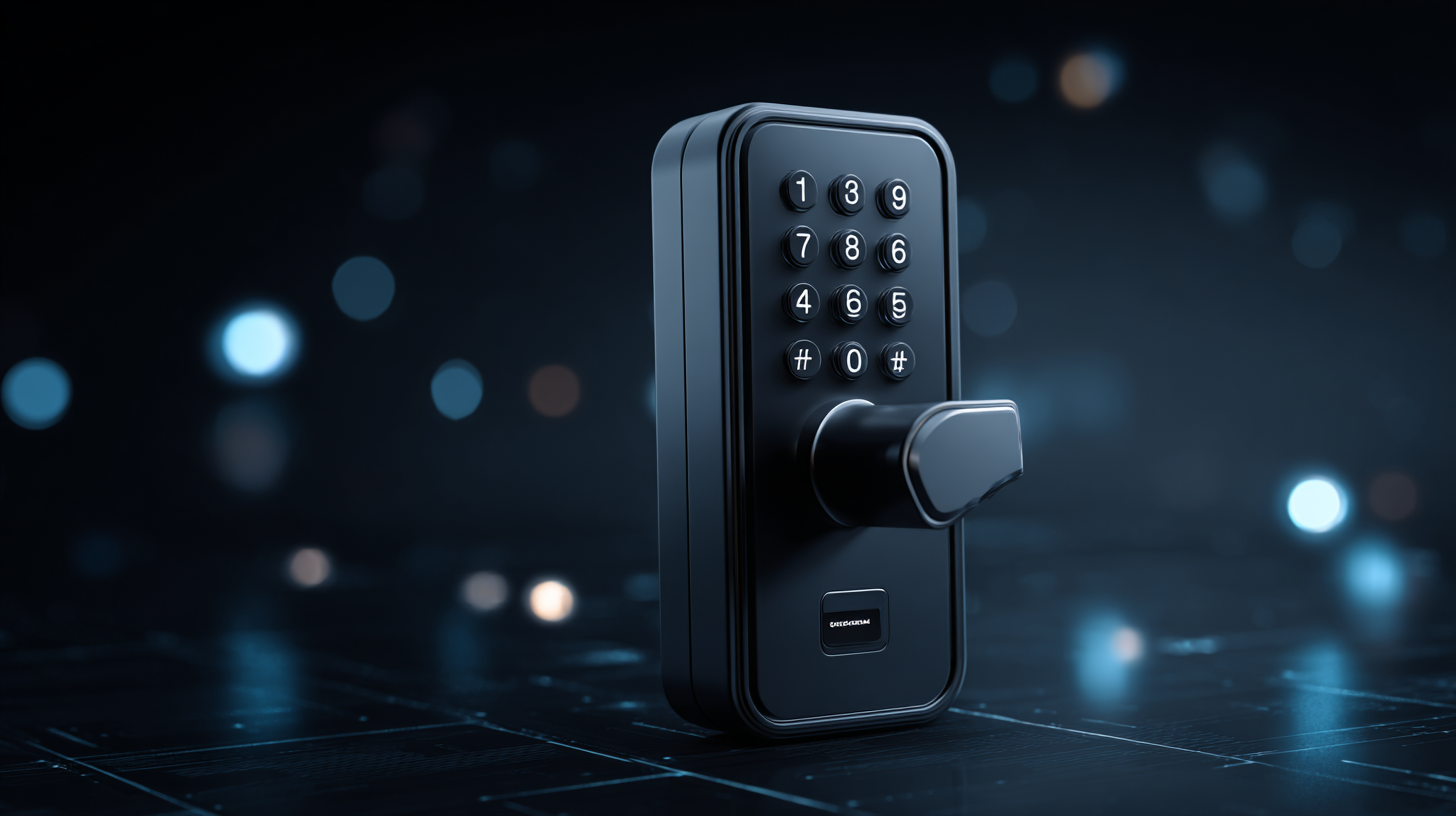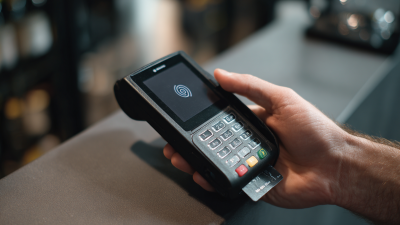Unlocking the Future of Access Control Security with Digital Solutions
In today's rapidly evolving technological landscape, the importance of Access Control Security cannot be overstated. As organizations strive to protect sensitive information and ensure the safety of their assets, the integration of digital solutions has become a vital component of modern security strategies. This "How to" guide aims to provide insights into unlocking the future of access control by leveraging innovative technologies such as biometric authentication, advanced encryption, and smart surveillance systems. By understanding the various digital solutions available, businesses can enhance their security frameworks, streamline user access, and mitigate potential threats. As we explore the best practices and strategies for implementing effective access control measures, it becomes clear that a proactive approach to security is essential for safeguarding organizational integrity in an increasingly digital world.

Exploring the Evolution of Access Control Systems in the Digital Age
The evolution of access control systems in the digital age reflects a significant shift towards integrating advanced technologies into security protocols. As organizations increasingly rely on digital solutions, traditional methods of access control are being transformed. Innovations such as biometric authentication and secure digital credential platforms facilitate safer and more efficient ways to manage personal identity. These developments not only enhance the security of access control systems but also streamline user experiences in environments where safeguarding sensitive information is paramount.
In parallel, the rise of digital identity management systems underscores the importance of privacy, security, and trust within these evolving frameworks. Lessons learned from national digital ID programs highlight the need for robust mechanisms to protect user data while ensuring seamless access to services. As we approach 2035, the convergence of artificial intelligence and digital tools will further shape the landscape of access control, promising new efficiencies and approaches to safeguarding physical and digital assets. This ongoing journey demonstrates how digital transformation is paving the way for more resilient security solutions tailored to the realities of our interconnected world.

Understanding the Role of Biometrics in Modern Access Control Solutions
In recent years, biometrics has taken center stage in modern access control solutions, offering enhanced security and convenience. The Global Biometrics Market is projected to reach USD 62.73 billion by 2027, growing at a CAGR of 17.26% from 2020 to 2027, according to a report by Fortune Business Insights. This growth underscores the increasing reliance on biometric authentication methods, such as fingerprint scanning, facial recognition, and iris detection, which are being adopted across various sectors, including healthcare, finance, and government.
Biometric systems provide a significant advantage over traditional access control methods, which often rely on passwords or physical keys that can be lost or stolen. A study by the International Biometric + Identity Association (IBIA) reveals that biometrics can reduce security breaches by up to 90%. As organizations prioritize tighter security measures, incorporating biometric solutions can not only prevent unauthorized access but also streamline user experiences, with many systems enabling instant identification and authentication. This trend towards digital solutions emphasizes the evolving landscape of security, where biometrics is poised to play a crucial role in safeguarding sensitive environments.
Analyzing the Impact of IoT on Security and Access Control Efficiency
The rise of the Internet of Things (IoT) has fundamentally transformed the security and access control landscape. As organizations seek to enhance their security frameworks using sophisticated digital solutions, IoT devices emerge as critical components in creating a robust access control system. With the global smart office market projected to grow from $26.93 billion in 2025 to $39.70 billion by 2033, driven by a compound annual growth rate (CAGR) of 4.97%, the integration of IoT technologies is pivotal for achieving operational efficiency and security improvements.
As businesses adopt a zero-trust security model, which emphasizes the verification of every user and device, IoT security plays a crucial role in reducing unauthorized access risks. A study on IoT gateways indicates that the market surpassed $11.1 billion in 2023, with an anticipated CAGR of around 10% from 2024 to 2032. This growth underscores the need for effective data analysis and real-time decision-making capabilities, both of which are paramount in maintaining secure access control protocols.
**Tip:** When implementing IoT solutions for access control, prioritize devices that support high-level encryption and regular firmware updates to mitigate security vulnerabilities. Additionally, conducting periodic security assessments can help identify and address potential weaknesses in the system.
Impact of IoT on Access Control Security Efficiency
Integration of AI in Access Control: Enhancing Security and User Experience
The integration of artificial intelligence (AI) in access control systems is revolutionizing the way organizations approach security. By leveraging advanced algorithms and machine learning, AI enhances the capability to analyze user behavior, identify anomalies, and predict potential security breaches. This not only increases the overall security of the premises but also improves the user experience by streamlining the authentication process. For instance, biometric access systems powered by AI can quickly and accurately authenticate individuals, reducing wait times and increasing efficiency.
**Tips for Implementing AI in Access Control:**
1. Choose a scalable AI solution that can adapt to your organization's growing security needs, such as user enrollment and access patterns.
2. Prioritize user privacy by ensuring that any data collected is stored securely and used strictly for enhancing security measures.
3. Train staff on the new system to maximize its potential, fostering a seamless transition between traditional and AI-driven access control processes.
As organizations adopt these smart technologies, the landscape of access control will continue to evolve, making premises safer and user interactions more intuitive. With AI in the driver's seat, the future of security looks promising and secure.
Unlocking the Future of Access Control Security with Digital Solutions - Integration of AI in Access Control: Enhancing Security and User Experience
| Dimension | Description | Impact on Security | User Experience |
|---|---|---|---|
| AI-Based Identification | Utilizing facial recognition and biometric data for identity verification. | Increases accuracy in identifying unauthorized access. | Faster access for authorized users, reducing wait times. |
| Smartphone Integration | Access via mobile devices using secure apps. | Eliminates the need for physical keys, enhancing security. | Convenient and user-friendly access method. |
| Cloud-Based Access Management | Remote management of access controls via cloud services. | Centralizes security controls and reduces risks of local failures. | Enables easy updates and access from anywhere. |
| Real-Time Monitoring | Constant surveillance and alert systems to identify breaches. | Immediate response to security threats. | Increases user confidence in safety measures. |
| Data Analytics | Analyzing access data for trends and anomalies. | Identifies potential security issues before they escalate. | Provides insights to enhance user convenience. |
Reviewing Statistics on Security Breaches and Digital Solutions Effectiveness
In recent years, security breaches have become a pressing concern for organizations across various sectors. According to recent statistics, a staggering 43% of cyber attacks target small businesses, underscoring the urgency for effective access control solutions. These breaches not only lead to financial losses but also damage reputation and erode customer trust. As businesses increasingly rely on digital infrastructures, the need for robust security measures cannot be overstated.

Digital solutions, such as biometric authentication and cloud-based access management, have emerged as effective countermeasures to these threats. Studies show that organizations implementing advanced digital access controls experience up to a 50% reduction in unauthorized access incidents. These technologies not only enhance security but also streamline operations, providing businesses with both peace of mind and efficiency. By continuously analyzing security metrics, companies can adapt and strengthen their defenses, making digital solutions a critical component of modern security strategies.
Related Posts
-

Digital Strategies to Enhance Your Access Control Security with Proven Data Insights
-

5 Digital Strategies to Optimize Your Best Access Control System Purchase
-

Choosing the Right Manufacturer for the Best Biometric Machine to Ensure High Quality and Reliability
-

Unlocking Security and Convenience with the Best Biometric Device Advantages
-

Unlocking the Advantages of Access Control Security for Global Procurement
-

Ultimate Checklist for Implementing a Biometric System in Your Business